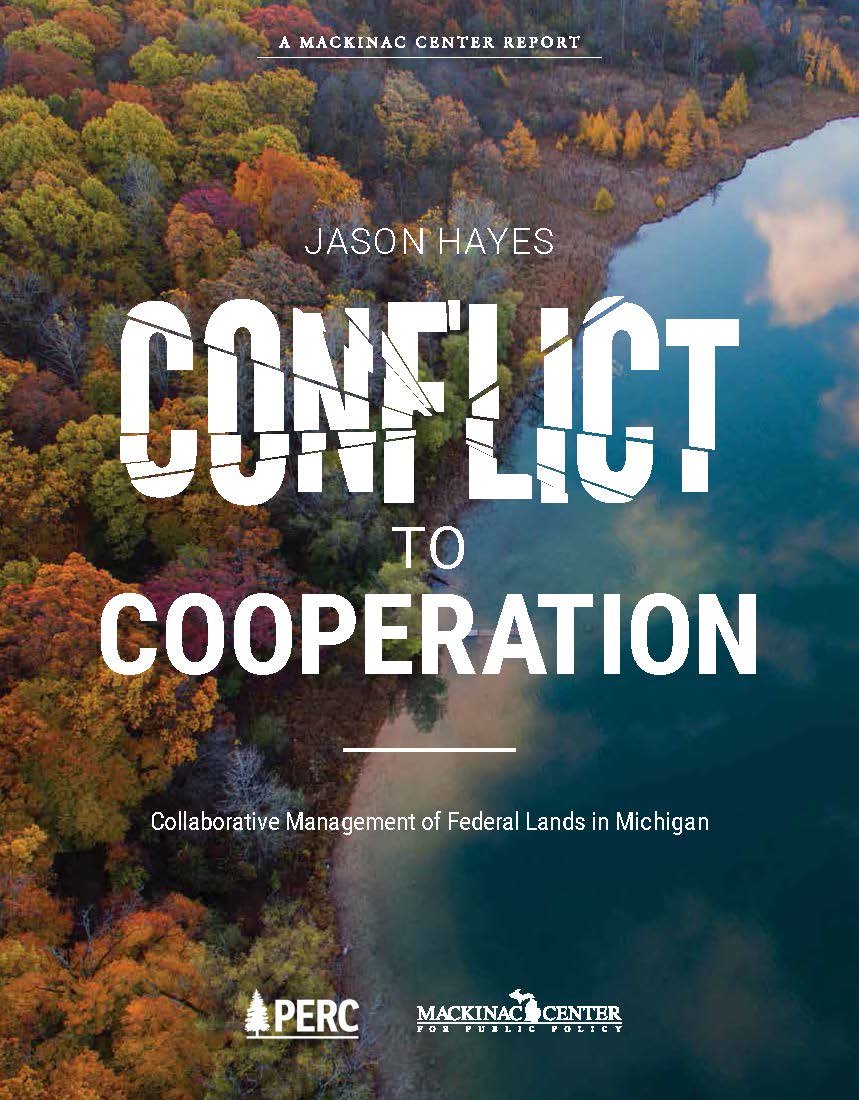DOWNLOAD THE FULL REPORT
Introduction
The actions of federal land managers can often set private landowners and the general public at odds with government agencies. This conflict can take several forms: overly strict rule enforcement, intractability in settling boundary disputes, delays in issuing permits and stringent restrictions on accessing public lands.
Michigan has more federal land than any other state in the Midwest. One-tenth of the Great Lakes State — 3.6 million acres — is owned and managed by the federal government. The average proportion of federally owned land in the other Midwest states is less than 3 percent. While the share of federal lands in Michigan is significantly less than in many western states —such as California, Idaho, Utah, Oregon, Washington, Wyoming and Nevada — the state ranks 15th nationally in total federal acreage. This comparatively high level of federal ownership and oversight creates unique and pressing management issues for government land managers, as well as private property owners in Michigan.
As is often the case with federal lands in western states, many private landowners and members of the broader public believe that access to Michigan’s federally owned lands is increasingly limited. Examples of this changing perception and restrictive management practices that might fuel this perception appear below in the section titled “Land Use Conflicts.” As demonstrated in those stories, there is an increasing concern that federal managers, working under a complex legislative and regulatory system, are managing public lands toward a state of wilderness. These managers are seen as increasingly limiting the use of federal lands to only a narrow set of activities, such as nonmotorized recreation.
Meanwhile, federal land managers reveal that they often feel caught between a rock and a hard place. They report that they are required to achieve multiple goals simultaneously when overseeing public lands, and sometimes these goals are in conflict with each other. Multilayered and complex laws and regulations, paired with pressure from diametrically opposed and vocal interest groups, make it nearly impossible to simply select one “right answer” for land use decisions. At the same time, federal officials insist that they work to manage forest resources with the utilitarian guiding principle of “managing for the greatest good, for the greatest number, in the longest run.”
The dynamic relationships between private property rights, historical land use, environmental concerns, and complex legal and regulatory rules effectively ensure that conflicts will arise between private landowners and federal land managers. However, not all conflicts need to end in court or in drawn-out and expensive disputes. Collaborative management practices exist and have been used across the nation. These practices could provide valuable lessons for resolving the confrontations that may arise between private landowners, communities, and federal land managers in Michigan.
This paper will briefly review some of the laws governing federal lands, as well as describe some of the conflicts that have arisen. It then gives examples of collaborative management approaches that have avoided or resolved conflicts in Michigan and around the country. Applying them more frequently in Michigan could help reduce conflicts across the state and lead to improved environmental outcomes, as well as increased public access to Michigan’s national forests.
This study was written during a visiting fellowship at PERC and is a collaboration with the Mackinac Center for Public Policy, a nonprofit institute that advances the principles of free markets and limited government in Michigan.
Download the full report, including endnotes and references.




